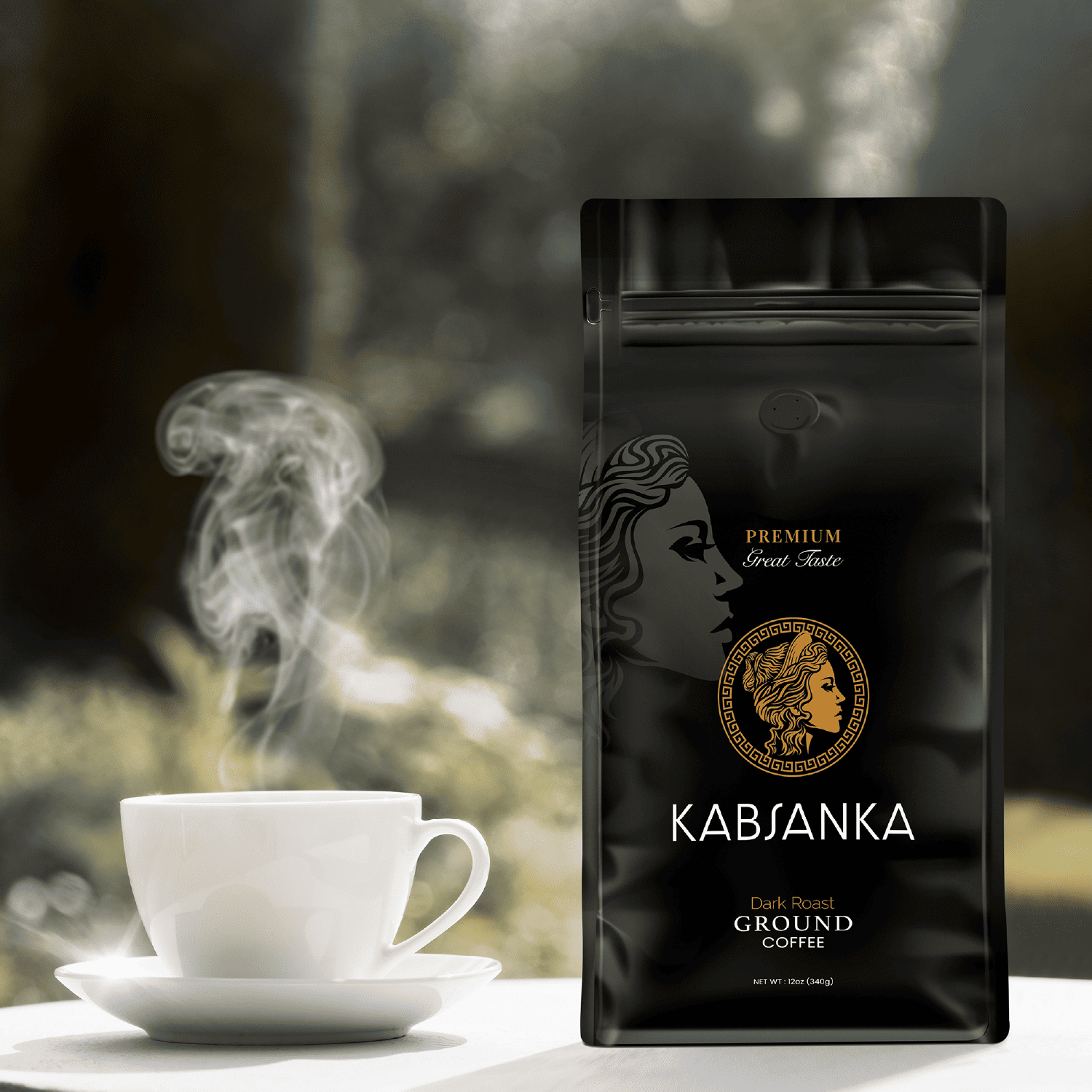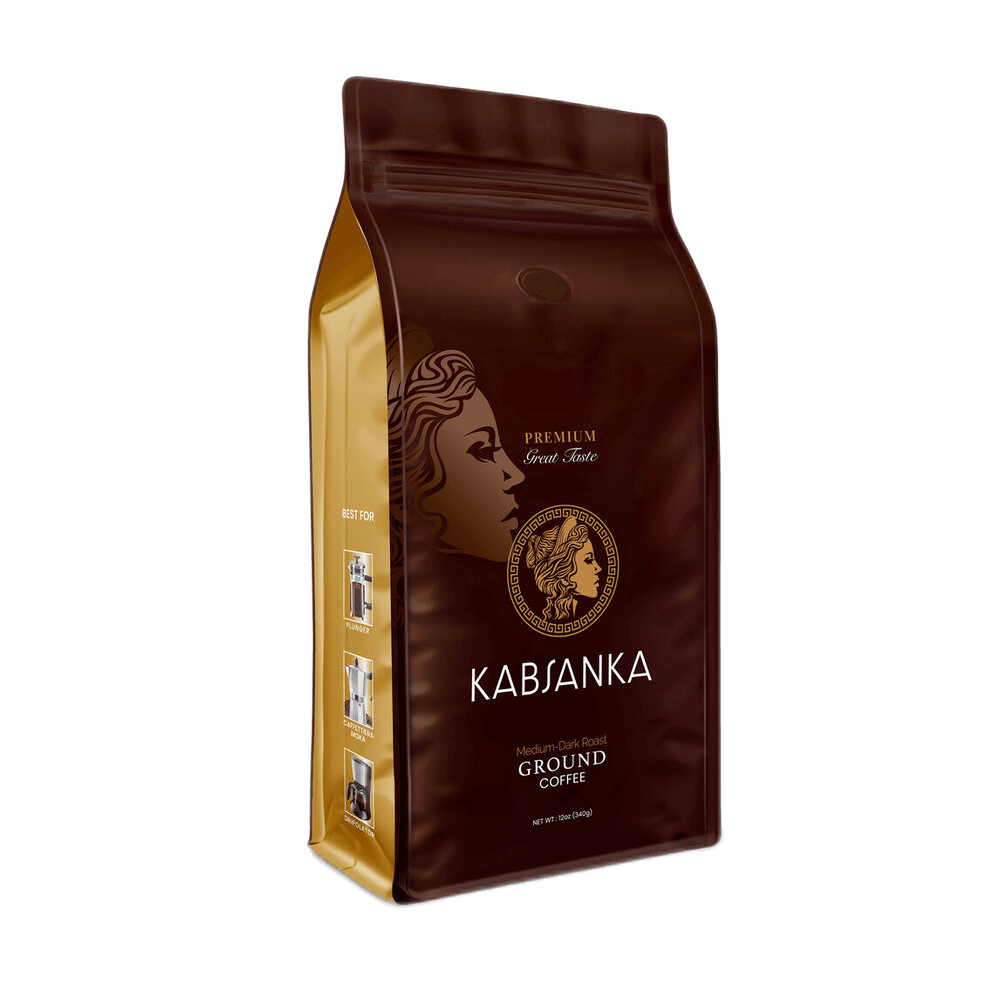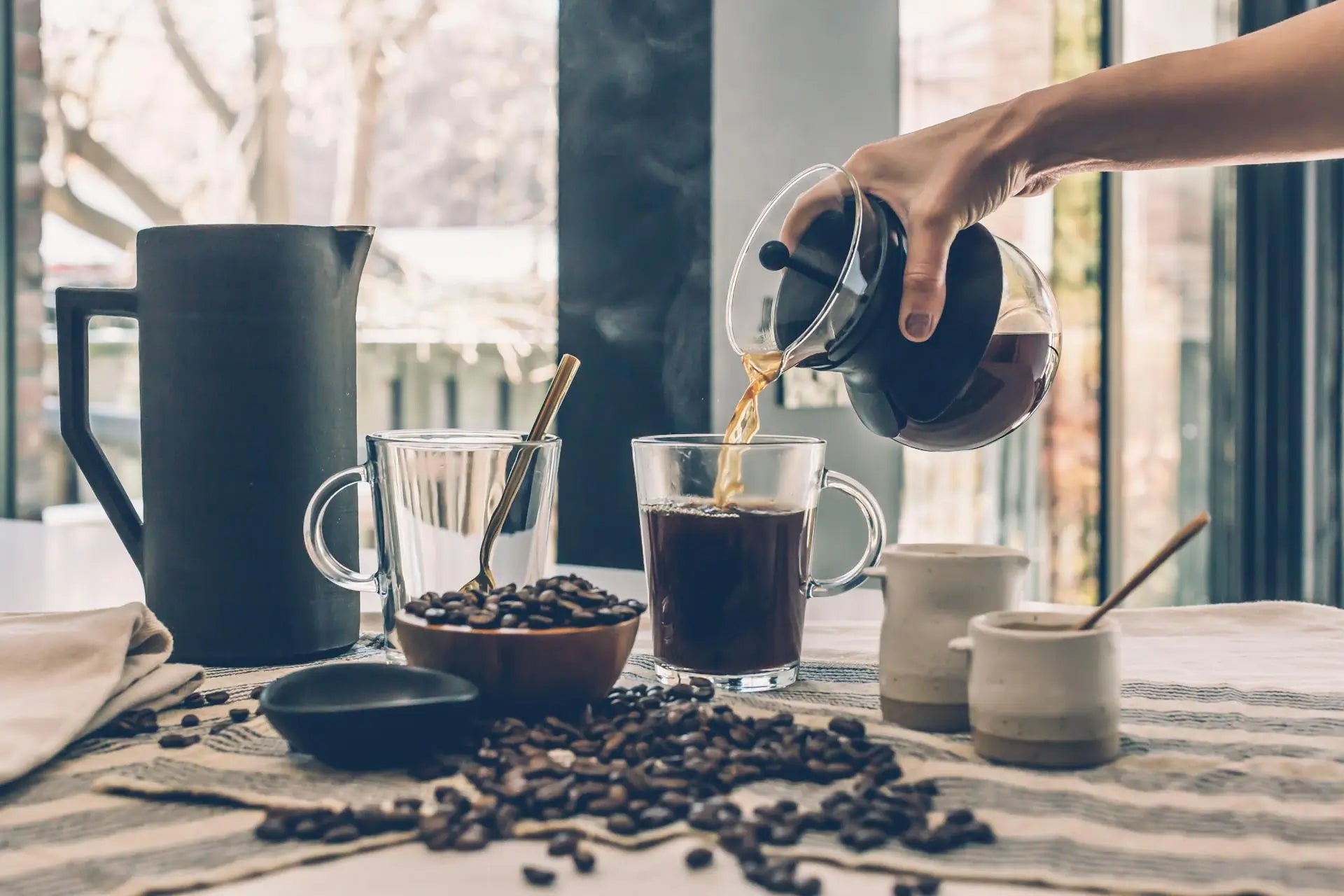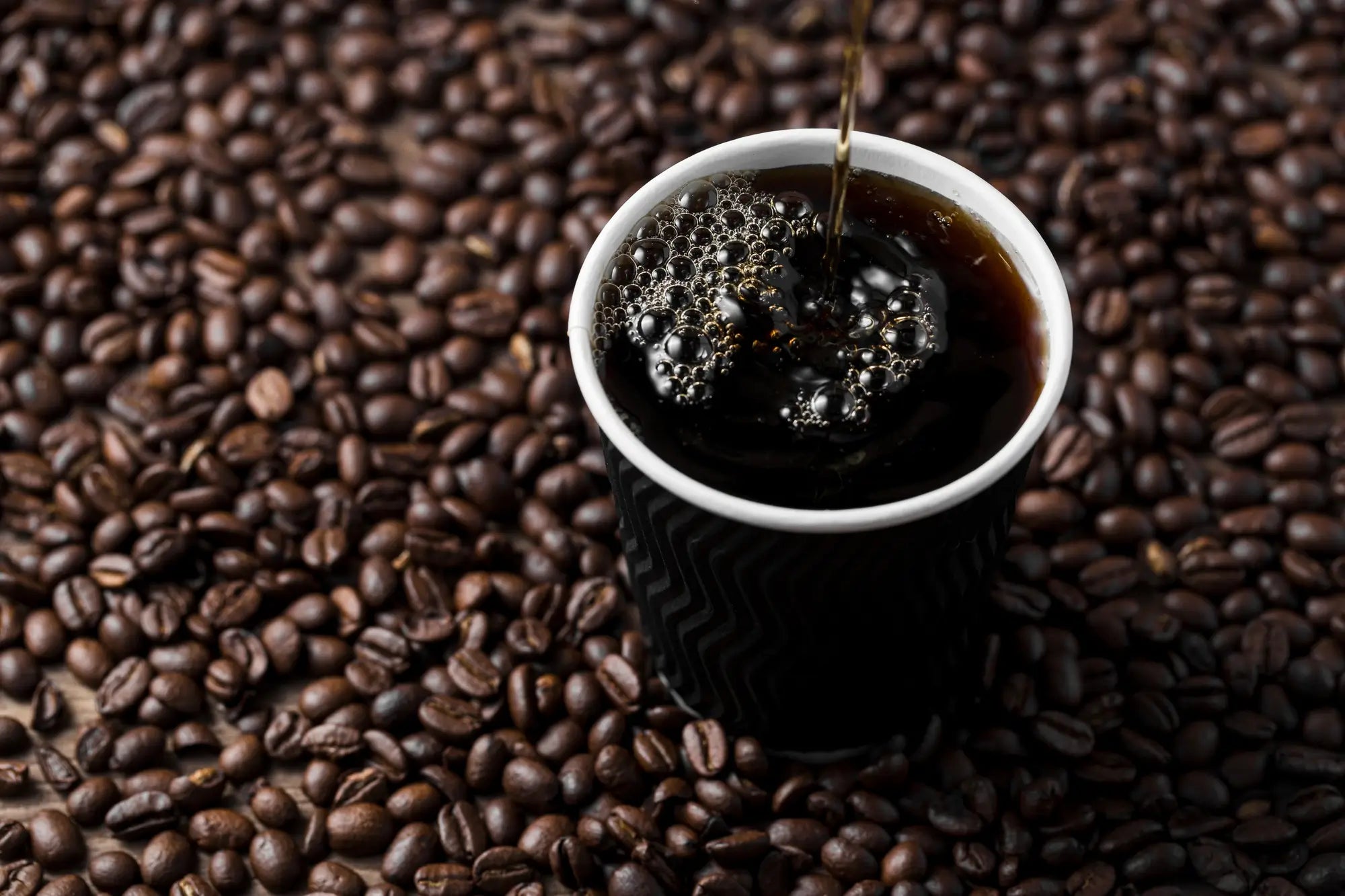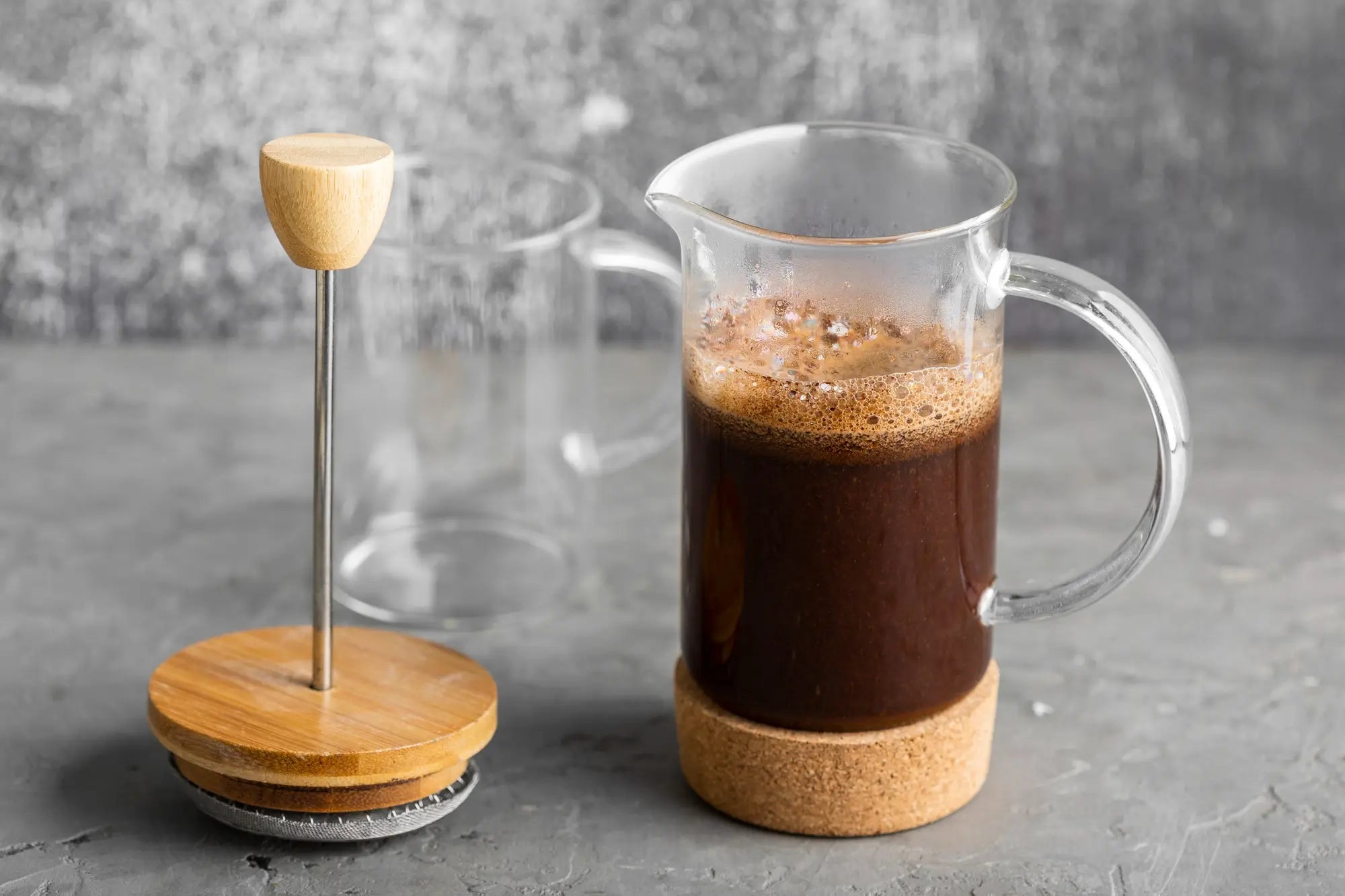Brewing the perfect cup of coffee is an art that combines science, technique, and a touch of personal preference. Whether you're a novice just starting your coffee journey or a seasoned enthusiast looking to refine your skills, understanding the basics of coffee brewing is essential.
From selecting the right beans to mastering different brewing methods, this guide will walk you through everything you need to know to elevate your coffee experience. Get ready to unlock the secrets of brewing and enjoy a rich, flavorful cup of coffee every time.
Whole Bean vs. Ground Coffee: Main Differences
Choosing whole-bean and ground coffee can significantly impact your coffee experience when enjoying your daily cup of coffee. Each option has unique characteristics that can affect the flavor, freshness, and brewing process.
What Is Whole-Bean Coffee?

Whole bean coffee refers to coffee beans left intact, maintaining their original form until they are ready to be brewed. These beans are typically roasted to perfection and sold in their whole state. With whole-bean coffee, you have complete control over the coffee grind size, allowing you to customize it according to your preferred brewing method.
What Is Ground Coffee?
On the other hand, ground coffee is simply whole-bean coffee that has been processed into a finer consistency. This coffee is already pre-ground, making it convenient for those who prefer a quick and easy brewing process. However, the grinding process exposes the coffee grounds to air, which can lead to faster oxidation and a loss of freshness.
Whole Bean vs. Ground Coffee
- Grind: Whole beans offer flexibility in choosing grind size for customized brewing, preserving freshness and flavor. Pre-ground coffee, while convenient, may lack precision and freshness compared to freshly ground beans.
- Brewing: Freshly ground whole beans contribute to better extraction, allowing water to penetrate evenly and extract desired flavors. Using pre-ground coffee can result in inconsistent brewing, leading to a less flavorful cup.
- Staleness: Ground coffee can quickly go stale due to exposure to oxygen, moisture, and light after grinding. Whole-bean coffee, when stored correctly and ground just before brewing, maintains freshness longer for optimal flavor.
- Flavor: Whole-bean coffee typically offers a richer, more complex flavor profile due to better preservation of aromas and nuances until grinding. Ground coffee may not capture all the subtleties and depth found in whole beans.
5 Ways to Make Coffee: Main Methods to Know Of
Coffee is a popular beverage that many people turn to to kick-start their day. There are many ways to prepare coffee, and each brewing method brings unique flavors and characteristics that make every cup a distinct experience.
Different Ways to Make Coffee

- Drip Coffee Maker: This method involves pouring hot water over ground coffee beans in a filter, producing a smooth cup of coffee.
- Pour Over/Drip: Chemex: Pouring hot water over freshly ground coffee beans in a cone-shaped filter yields a clean, flavorful cup with more control over the brewing process.
- French Press: Coarse ground coffee steeps in hot water, and pressing a plunger separates grounds from liquid, creating a rich, full-bodied coffee.
- AeroPress: Using a plastic tube to push hot water through finely ground coffee results in an espresso-like shot, which can be enjoyed straight or diluted with hot water.
- Espresso Machine: For strong, concentrated coffee, hot water is forced through finely-ground coffee under high pressure, creating rich espresso for various drinks like lattes and cappuccinos.
- Moka Pot: Using steam pressure, this traditional Italian method brews strong, aromatic coffee with a flavor between espresso and drip brew.
- Cold Brew: Steeping coffee grounds in cold water overnight yields a smooth, less acidic coffee concentrate perfect for hot days or as a base for iced coffee.
Complete Guide to Coffee Roasts
The roasting process is crucial for transforming green coffee beans into the aromatic, flavorful delights we savor. Understanding the different coffee roast levels is essential for selecting your preferred brew.
Why Coffee Roasts Matter
Coffee roasting is a meticulous process where green beans are heated until reaching the desired roast level. This method, though seemingly simple, requires careful monitoring of internal temperatures and heat application. The heat triggers chemical changes, browning the beans and caramelizing sugars, resulting in a unique and captivating final product.
Roast degree significantly influences coffee's taste and characteristics. Lighter roasts offer a delicate flavor, while darker ones are bolder and fuller-bodied. Understanding these roast types helps in selecting coffee that best matches your taste preferences.
Main Types of Coffee Roasts

- Light Roasts: Roasted briefly to a light brown color without surface oils, preserving the original bean flavors, ideal for milder coffee preferences.
- Light City
- Half City
- Cinnamon Roast
- Medium Roasts: Medium brown with balanced body and acidity, releasing some oils, popular in the United States for its balanced flavor and strength.
- City Roast
- American
- Breakfast
- Medium-Dark Roasts: Richer flavor profile with slight surface oil, offering robust body and a mild bittersweet aftertaste.
- Full City
- Dark Roasts: Shiny black beans with an oily surface, featuring a strong, bitter coffee taste and reduced acidity. Varieties range from slightly dark to charred.
- High
- Continental
- New Orleans
- European
- Espresso
- Viennese
- Italian
- French
How to Choose the Right Coffee Roast?
To find your ideal coffee roast, consider your taste preferences. Light and medium roasts offer nuanced flavors and bright acidity, while medium-dark and dark roasts provide a more pronounced, full-bodied taste. Experimenting with different roasts is key to discovering your perfect cup of coffee.
What Are the Main Coffee Notes to Know Of?
Coffee is not just a drink; it is also an experience. A good cup of coffee can uplift your mood, give you energy, and stimulate creativity. But have you ever wondered what makes a good cup of coffee? What are the main coffee notes to know about?
Main Elements of Tasting Coffee
- Aroma: Coffee's aroma comes from oils released during roasting, containing hundreds of compounds that define its unique scent, shaping your initial impression of the brew.
- Body: Refers to coffee's weight or mouthfeel, ranging from light and watery to full and heavy, influenced by bean type, roast level, and brewing method.
- Flavor: Coffee's primary taste profile, combining sweet, bitter, and sour notes influenced by origin, processing, roast, and freshness.
- Acidity: Coffee's brightness, not to be confused with sourness, adding complexity to flavor. Influenced by bean type, growing conditions, and roast level, acidity should be balanced for optimal taste.
- Aftertaste: Lingering flavor post-drink, known as coffee's "finish," ranging from sweet to bitter or sour, indicative of quality and balance.
What Are the Main Coffee Notes to Distinguish?

When tasting coffee, you'll encounter flavor notes like red apple, cashew, and dark chocolate. These notes aren't ingredients but describe the tastes you might detect, guiding your preference for specific flavor profiles.
Coffee Notes vs. Flavor Profile
Tasting notes highlight natural flavors in coffee influenced by origin, processing, and brewing methods, while flavor profiles encompass its overall taste, including sweetness, acidity, body, and balance, providing an overview of what to expect.
Main Types of Coffee Beans for Different Brews
Coffee isn't just a drink; it's a craft, an art form that captivates the senses and comforts the soul. Understanding the different coffee bean types is key to crafting the perfect cup for coffee lovers. Each bean variety contributes unique flavors and characteristics, making your morning brew an exceptional experience.
Importance of the Origin of Coffee Beans
Coffee beans' origin significantly shapes their flavor profile, influenced by factors like soil, climate, and altitude. The same coffee plant can yield diverse flavors based on its location, highlighting the intricate and varied palette of coffee tasting influenced by global landscapes.
Different Varieties of Coffee Beans

- Arabica (Coffea arabica): Primarily grown in Latin America, Eastern Africa, Asia, and Arabia, Arabica beans are the most consumed worldwide, making up 60% to 70% of global coffee production. Known for a sweeter, softer taste with hints of sugar, fruit, and berries.
- Robusta (Coffea canephora): Second in popularity to Arabica, Robusta beans are grown in Africa and Indonesia. They have a stronger, more bitter flavor with a grain-like overtone and nutty aftertaste. Robusta beans contain more caffeine than Arabica, contributing to their perceived bitterness.
- Liberica (Coffea liberica): Traditionally cultivated in the Philippines, Liberica beans offer a unique aroma and flavor profile. They are noted for a slightly woody and smoky taste complemented by fruity and floral notes.
- Excelsa (Coffea excelsa or Coffea liberica var. dewevrei): Often classified under Liberica, Excelsa thrives in Southeast Asia, prized for its tart, fruity profile. It features a complex flavor profile with light roast notes and a lingering finish, offering a distinctive coffee experience.
Guide to the Different Coffee Flavor Profiles
Coffee is not just a beverage; it's a complex symphony of flavors that can be as diverse as the regions where the beans are grown. From the bold bitterness to the subtle sweetness and the acidic zing to the smoothness that caresses your palate, each cup offers a unique experience.
Bitter vs. Sweet Coffee
The balance between bitterness and sweetness is key in coffee flavor profiles. Bitterness often stems from roasted beans, appealing to some for its robustness while others favor a sweeter, milder taste. Roast level, brewing method, and bean type influence bitterness. Opt for naturally sweeter beans like Arabica to enhance sweetness. Adjusting brewing parameters, such as water temperature and brew time, can alter this balance. Experimenting with brewing techniques helps customize your coffee to suit your taste.

Importance of Caffeine Content Levels
Caffeine content is crucial for coffee enthusiasts, with preferences ranging from high-caffeine kicks to milder boosts. Factors like bean type, roast level, and brewing method affect caffeine levels. Robusta beans offer higher caffeine content compared to arabica. Lighter roasts generally retain more caffeine than darker ones, and methods like espresso extraction concentrate caffeine. Knowing your caffeine preferences helps select coffee that matches your energy needs and taste.
Acidic vs. Smooth Coffee
Coffee acidity isn't sour like other foods; it adds bright, tangy notes that enhance flavor. Some enjoy its vibrancy, while others prefer a smoother taste.
Acidity varies with bean altitude, soil, and processing. Opt for lower altitude beans for a smoother cup, and higher altitude ones for bright, fruity notes if you prefer acidity.
How to Choose the Right Ground Coffee
Choosing the right ground coffee is crucial for flavor. Espresso needs fine grind for quick extraction; French press benefits from coarser grind for full-bodied taste. Use a burr grinder and experiment to match your brewing method.
How Long Are Coffee Grounds Good For? What to Know
In the quest for a delightful cup of coffee, one often wonders, how long are coffee grounds good for?
Does Ground Coffee Go Bad?
Among coffee enthusiasts, concerns about ground coffee's expiration are valid. Ground coffee doesn't spoil but may lose freshness over time, affecting flavor and aroma. Proper storage preserves freshness for a richer coffee experience.
How Long Are Coffee Grounds Good For?

Coffee enthusiasts often worry about ground coffee's shelf life, but it doesn't spoil. While freshness diminishes over time, affecting flavor and aroma, it remains drinkable.
Stored in an airtight container in a cool, dark place, ground coffee stays fresh for 3 to 5 months beyond its "sell-by" date. It can still brew a satisfactory cup for six months or more, though flavor may fade if not stored properly.
How Long Does Brewed Coffee Last?
Coffee lovers appreciate brewed coffee for its rich aroma and bold flavors, making it ideal anytime. Factors like bean choice, brewing techniques, storage, and added ingredients affect its freshness.
Brewed coffee generally stays fresh for about 12 hours at room temperature, but this can vary based on these factors.
Best Way to Keep Coffee Fresh
To keep coffee fresh, use an airtight, opaque container in a cool, dark place. Protecting grounds from light and air preserves their essence for a flavorful experience.
Grinding techniques and roast type also impact freshness. Whole beans stay flavorful longer than pre-ground coffee. Grind just before brewing for optimal taste.
Understanding Coffee Acidity & How It Affects Your Cup
In the vast and intricate world of coffee, one aspect that often perplexes enthusiasts is acidity. Contrary to popular belief, acidity in coffee is not a negative trait but a crucial element that contributes to the overall flavor profile.
Is Coffee Highly Acidic?
The perception of acidity in coffee can be misunderstood. Unlike the sourness of spoiled milk, coffee acidity is a desirable trait that adds vibrancy and complexity to your brew. However, acidity levels vary among different bean types and origins, with not all coffees being highly acidic.

What Is Coffee Acidity?
Coffee acidity isn't about sharp tanginess but rather a harmonious interplay of lively, bright notes that gracefully dance on your palate. It's like a grand symphony, carefully composed to create a blend of flavors that resonate with opulence and leave a lasting impression.
How Is Coffee Acidity Measured?
Measuring coffee acidity involves understanding its chemical composition, often assessed using the pH scale where lower pH indicates higher acidity. However, acidity perception isn't solely based on pH but on a blend of acids working together. Enthusiasts use "acidity" in flavor profiles to highlight coffee's brightness and liveliness.
Types of Coffee Acidity
- Citric
- Malic
- Phosphoric
Relationship Between Coffee Acidity and Roast
Roasting plays a crucial role in shaping coffee acidity. Lighter roasts enhance and preserve bean acidity, while darker roasts can mellow acidity and develop richer flavors. This interplay between roast level and acidity is key in defining the coffee's overall flavor profile.
High Altitude Coffee: Why Altitude Affects Your Coffee
High-altitude coffee is not merely a bean sitting higher up in the clouds; it's an exceptional creation born from the heavens. From the Ethiopian plateaus to the Andes of Colombia, altitude is the secret ingredient behind the world's most prized and flavorful coffee beans.
How Does Altitude Affect Coffee?
The altitude of coffee cultivation significantly impacts its taste, aroma, and chemical composition. Higher altitudes, with cooler air and thinner soil, yield denser, more complex beans. These smaller, concentrated beans develop intense flavors. Conversely, low-altitude coffee, growing in fertile conditions for a shorter period, tends to have a milder, less distinctive profile.
Main Coffee Altitude

- Low Altitude: Coffee grown below 2,000 feet matures quickly, resulting in softer, less dense beans with a generic taste profile that some find flat.
- Medium Altitude: Beans grown between 2,000 and 4,000 feet offer a balanced flavor profile, denser than low-altitude beans but not as rich as high-altitude varieties. They provide a more complex taste experience.
- High Altitude: Grown between 4,000 and 6,000 feet, high-altitude beans are small, dense, and packed with vibrant acidity, bright aroma, and complex flavors, often featuring floral and fruity notes—a choice for coffee connoisseurs.
- Very High Altitude: Beans cultivated above 6,000 feet yield ultra-dense, exceptional coffee with an extensive flavor range, celebrated for their exquisite richness and complexity.
High-Altitude Coffee vs. Low-Altitude Coffee
High-altitude coffee surprises with bold flavors, layered textures, and diverse aromas, offering an exquisite taste experience. In contrast, low-altitude coffee, while comforting and mild, lacks the "wow" factor of its high-altitude counterpart. High-altitude coffee orchestrates a symphony of chocolate, berry, nut, and citrus or jasmine notes, creating a rich and intricate flavor profile. Low-altitude coffee, like a solo act, is pleasant with its own charm, delivering a simpler melody.
Complete Guide to Choosing Coffee Grounds
Every step is as crucial as the last when it comes to a satisfactory cup of coffee. From the beans' freshness to the brewing process's intricacies, the smallest details can culminate in an exquisite or mundane awakening of the senses. Among these oft-overlooked components is the coffee grind - an essential variable that can greatly affect your final cup.
How to Choose Ground Coffee

- Consider Your Brewing Method: Each brewing method demands a specific grind size; for instance, French press needs coarse, espresso fine. Understanding your brewer's requirements is crucial in refining your choices.
- Grind Size's Impact: The size directly influences extraction and flavor. Finer grinds expose more surface area, producing a robust brew; coarser grinds need longer extraction for lighter flavors.
- Freshness Matters: Prefer freshly ground coffee for optimal taste; grind just before brewing to preserve aromas and oils. Buying smaller amounts helps maintain freshness.
- Personalize Your Brew: Experiment with grind sizes and methods to discover your preferred flavor profile. Your perfect cup is about what pleases your palate most.
Why Coffee Grind Matters
- Flavor Profile Enhancement: The right grind enhances your coffee's flavor profile. Coarser grinds yield brighter, more acidic coffee, while finer grinds offer a smoother, fuller-bodied taste.
- Strength Adjustment: Grind size affects extraction time, influencing coffee strength. Coarser grinds require longer brewing for optimal strength, while finer grinds achieve strength more quickly.
- Achieving Balance: Grind selection contributes to balanced coffee. Matching your grinder to your brewing method prevents any one flavor from overpowering, ensuring a well-rounded cup.
What's the Healthiest Way to Make Coffee?
Coffee is among the most beloved beverages worldwide, not just for its rich flavor and aroma but also for its energizing effects. However, not all cups of coffee are created equal when it comes to health benefits.
Health Benefits of Drinking Coffee

- Improved brain function: Coffee contains caffeine, a natural stimulant that can enhance brain function, improve mood, and boost mental alertness.
- Increased metabolism: Drinking coffee may help increase your metabolic rate, aiding weight management.
- Reduced risk of certain diseases: Regular coffee consumption has been linked to a lower risk of developing type 2 diabetes, Parkinson's disease, Alzheimer's disease, and liver disease.
Enhanced physical performance: Caffeine can improve physical performance by increasing adrenaline levels and mobilizing fatty acids from fat tissues.
How Many Cups of Coffee Should You Drink a Day?
While coffee provides health benefits, moderation is key. Experts recommend up to 400mg of caffeine daily, roughly 4 cups, for most healthy adults. However, those with kidney issues should be cautious due to coffee's diuretic effect, which can lead to dehydration. Consulting a healthcare professional is advisable to determine safe consumption levels.
What's the Healthiest Way to Drink Coffee?
- Choose high-quality, organic, sustainably sourced coffee beans to avoid harmful pesticides and chemicals.
- Avoid adding sugars and creamers to keep your coffee a healthy choice. Instead, use a small amount of natural sweetener like stevia or a splash of plant-based milk.
- Opt for brewing methods that use a paper filter to help remove diterpenes, which can potentially raise LDL (bad) cholesterol levels.
Unfiltered vs. Filtered Coffee
Unfiltered coffee like French press or Turkish coffee has higher levels of cafestol and kahweol, compounds that can elevate LDL cholesterol. While occasional consumption is generally safe, those with high cholesterol or a family history of heart disease should opt for filtered coffee to minimize risk.
How to French Press Coffee: Complete Guide

Coffee is one of the most popular beverages in the world, with an estimated 2.25 billion cups consumed daily. There is a multitude of ways to brew coffee, and one method that stands out for its simplicity and rich flavor is the French press.
What is a French Press?
The French press, also known as a cafetière or coffee plunger, is a popular coffee brewing device. It features a cylindrical glass or plastic carafe with a handle, lid, and a metal plunger equipped with a fine mesh filter.
Invented by Italian designer Attilio Calimani in the 1920s, the French press gained widespread popularity after a French couple named Mayer and Delforge patented an improved design in 1958.
French Press Coffee Ingredients
You will need the following items for this procedure:
- A French press
- Measuring cup and a tablespoon
- Boiling water
- Coarse ground coffee
- Fine ground coffee
- A water thermometer
- Kettle
- A stirring spoon
How to French Press Coffee
- Warm Up the Press: Preheat your French press by rinsing it with hot water to maintain optimal temperature during brewing.
- Measure and Grind: Add a generous tablespoon (7-8 grams) of medium-coarse coffee grounds for every 6.7 oz (200 ml) of water, maintaining a 1:12 coffee-to-water ratio.
- Add Water: Empty the hot water from the press, add the coffee grounds, and start your timer as you pour hot water into the press. Fill halfway to ensure all grounds are saturated.
- Stir: At 1:00, break the crust with a wooden spoon to avoid damaging the glass and stir thoroughly.
- Add More Water: Fill the press to the top, place the lid on, and let the coffee steep without pressing.
- Press: At 4:00, press the plunger down smoothly with firm pressure.
- Serve and Enjoy: Serve immediately by transferring the coffee to a carafe to prevent over-extraction. Add water to the grounds, swirl, and dispose of them for easy cleaning.
Tips When Brewing Coffee with a French Press
- Unlock the freshest aroma and flavor by grinding whole coffee beans just before brewing. This captures the essence of the coffee in each cup. Use a burr grinder for uniform grounds, ensuring a full-bodied flavor. Experiment with a 1:5 coffee-to-water ratio and adjust to your taste.
- Use fresh, mineral-rich water to enhance taste, avoiding distilled or reverse-osmosis water. Aim for a water temperature of 195-205°F. Preheat your press to maintain consistent brewing temperature.
- Brew for four minutes for medium-ground coffee, adjusting time based on grind coarseness. Transfer the brewed coffee promptly to a thermal carafe to prevent over-extraction. Keep your press clean to avoid residue tastes in future brews.
Choose Quality Coffee with Kabsanka
At Kabsanka, we are dedicated to sourcing the finest premium blend coffee beans from various regions across the globe. Our meticulous attention to detail guarantees that we provide you with the healthiest, most flavorful, and lowest-acid coffee. Contact us today for premium coffee!
